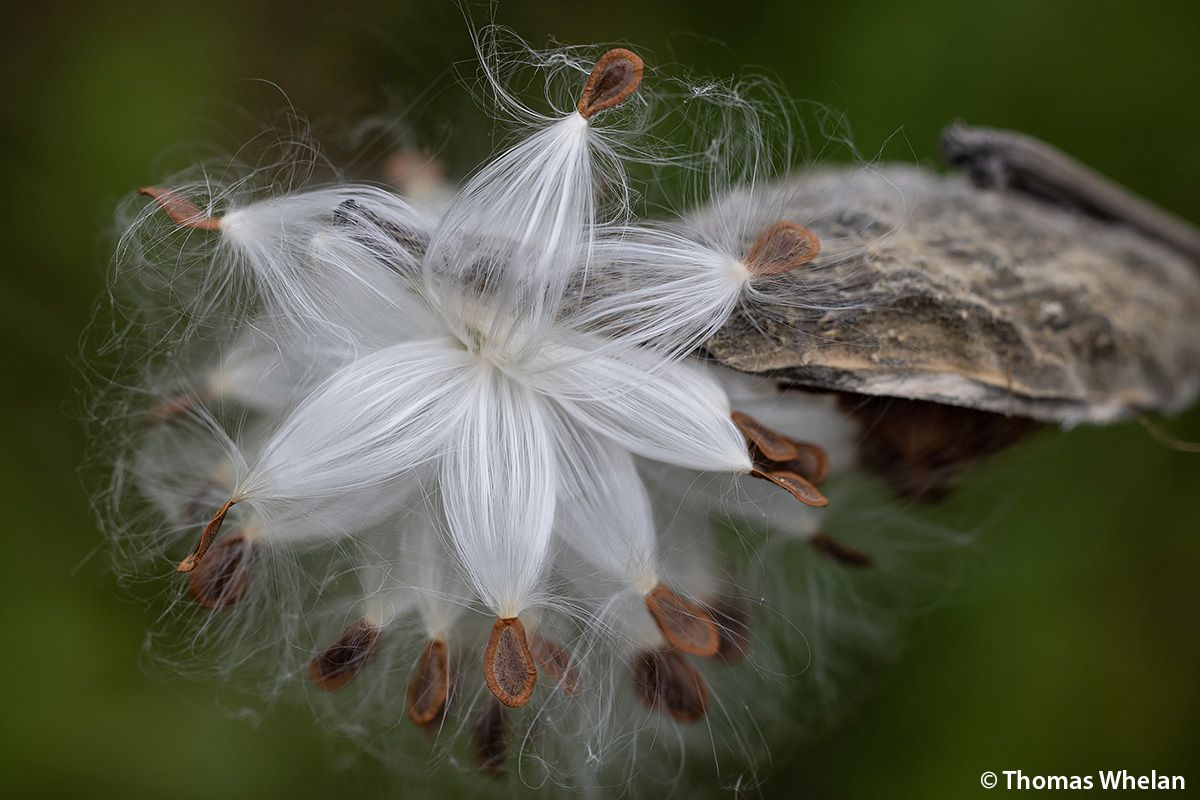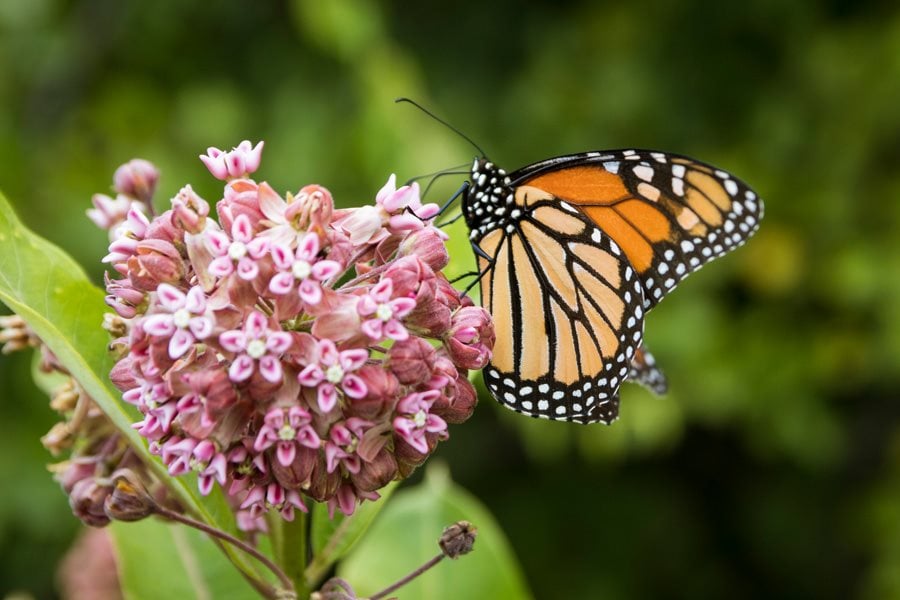Common Milkweed: The Lifesaver Of Monarch Butterflies
Common Milkweed: The Lifesaver of Monarch Butterflies
Monarch butterflies are one of the most iconic insects in North America. With their bright orange and black wings, they are a welcome sight in gardens and meadows throughout the continent. But did you know that these beautiful butterflies rely on a single plant for their survival? That plant is common milkweed.
Common milkweed (Asclepias syriaca) is a tall, leafy plant with clusters of white or pink flowers. It is native to North America and can be found in a variety of habitats, from fields and meadows to roadsides and forests. Monarch butterflies lay their eggs on milkweed leaves, and the caterpillars that hatch from these eggs feed exclusively on milkweed.
The milkweed plant contains a toxin called cardiac glycoside, which is poisonous to most animals. However, monarch butterflies have evolved to tolerate this toxin. In fact, the toxin actually helps to protect the butterflies from predators. When a monarch butterfly eats milkweed, the toxin accumulates in its body and makes it taste bad to predators.
The milkweed-monarch relationship is an example of coevolution. Coevolution occurs when two species evolve together in a way that benefits both species. In the case of milkweed and monarchs, the milkweed plant provides a safe place for monarchs to lay their eggs and the monarchs help to spread the milkweed's seeds.
Unfortunately, the population of monarch butterflies has been declining in recent years. One of the main reasons for this decline is the loss of milkweed habitat. As development and agriculture have encroached on natural areas, milkweed populations have dwindled. This has made it more difficult for monarchs to find food and lay their eggs.
There are a number of things that can be done to help monarch butterflies. One important step is to plant milkweed in your garden or yard. Milkweed is a relatively easy plant to grow and it can be found at most garden centers. You can also help to conserve milkweed habitat by supporting organizations that are working to protect monarch butterflies.
By planting milkweed and supporting conservation efforts, you can help to ensure the survival of one of North America's most iconic insects.
[Main Content]
In addition to being the only food source for monarch butterfly caterpillars, common milkweed also provides a number of other benefits to the environment. For example, milkweed plants help to improve soil quality by fixing nitrogen. They also attract pollinators, such as butterflies, bees, and hummingbirds. And because milkweed is a tall plant, it provides shelter for other wildlife, such as birds and small mammals.
In recent years, there has been a growing effort to promote the planting of common milkweed in gardens and other areas. This effort is being led by organizations such as the Monarch Joint Venture, which is a coalition of government agencies, non-profit organizations, and businesses working to conserve monarch butterflies.
The Monarch Joint Venture has developed a number of resources to help people plant and care for common milkweed. These resources include a milkweed planting guide, a list of milkweed suppliers, and a website with information about monarch butterflies and milkweed.
If you are interested in helping to save monarch butterflies, one of the best things you can do is plant common milkweed. By planting milkweed, you can provide a safe haven for monarch butterflies and help to ensure their survival.
[Conclusion]
Common milkweed is a vital plant for monarch butterflies. By planting milkweed, you can help to save these beautiful insects and contribute to the health of the environment.
Common milkweed is a tall, stately plant that is native to North America. It is one of the most important plants for monarch butterflies, as their caterpillars only eat milkweed leaves. Common milkweed can be found in a variety of habitats, including meadows, fields, and roadsides. It blooms from late spring to early fall, and its flowers are a bright pink or purple color.
If you are interested in learning more about common milkweed, I encourage you to visit Garden Wiki. This website has a wealth of information about the plant, including its history, its uses, and how to identify it. You can also find information on how to plant and care for common milkweed, as well as tips on how to attract monarch butterflies to your garden.
FAQ of common milkweed
- What is common milkweed?
Common milkweed (Asclepias syriaca) is a tall, leafy perennial plant that is native to North America. It has milky sap and produces clusters of pink or white flowers in the summer. Common milkweed is a host plant for monarch butterflies, which lay their eggs on the plant's leaves.
- Why is it called milkweed?
Common milkweed is called milkweed because it produces a milky sap. This sap contains toxins that make the plant poisonous to most animals. However, monarch butterflies are immune to these toxins and use them to protect themselves from predators.
- What are the benefits of planting common milkweed?
There are many benefits to planting common milkweed. First, it is a host plant for monarch butterflies. Monarch butterflies are declining in population, so planting milkweed can help to support these important pollinators. Second, common milkweed is a beautiful plant that can add color and interest to your garden. Third, milkweed is a drought-tolerant plant that is easy to care for.
- How do I plant common milkweed?
Common milkweed can be planted from seed or from a nursery plant. If you are planting from seed, sow the seeds in the spring in a well-drained location. If you are planting a nursery plant, choose a location that receives full sun and has well-drained soil. Space the plants about 2 feet apart.
- How do I care for common milkweed?
Common milkweed is a relatively low-maintenance plant. Water it regularly during the first year after planting, but once it is established, it is drought-tolerant. Fertilize the plant once a year in the spring with a balanced fertilizer. Deadhead the flowers to encourage more blooms.
Image of common milkweed
5 different images of common milkweed from Pinterest:
- Image 1: A close-up of a white common milkweed flower with its distinctive orange and black seed pods.

- Image 2: A tall, leafy common milkweed plant with several white flowers in bloom.

- Image 3: A cluster of common milkweed seed pods, which are covered in white hairs.

- Image 4: A monarch butterfly feeding on a common milkweed flower. Monarch butterflies are the only butterflies that can eat milkweed, and they rely on the plant for their survival.

- Image 5: A field of common milkweed plants in bloom. Common milkweed is a native plant of North America and can be found in a variety of habitats, including meadows, fields, and roadsides.

Post a Comment for "Common Milkweed: The Lifesaver Of Monarch Butterflies"